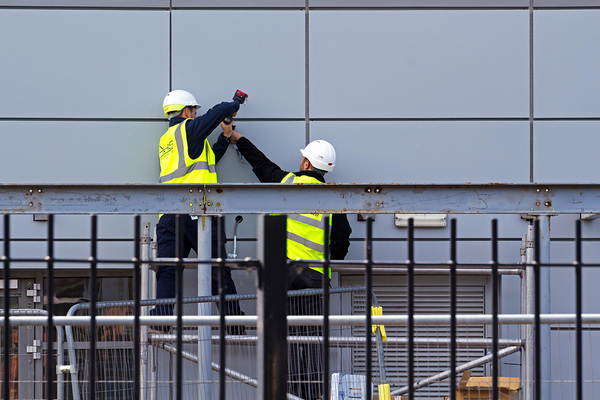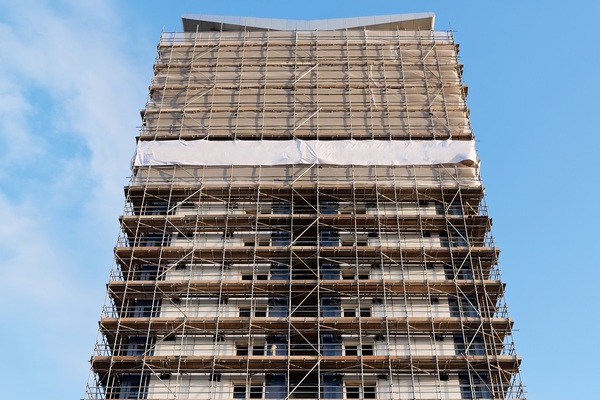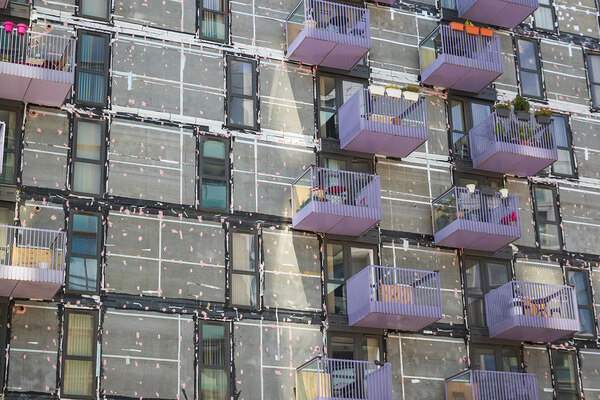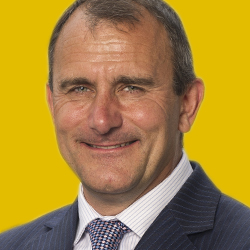How well has the sector responded to cladding remediation and a renewed focus on building safety?
One of the most shocking revelations from the Grenfell Tower Inquiry and Hackitt Review was the practices around cladding. Paul Nash, a member of the Industry Safety Steering Group and independent chair of South East Consortium, tells Inside Housing how the housing sector is getting on with meeting the challenge of cladding remediation

In association with:

How is the sector responding as a whole?
It’s a fast-changing picture, as different organisations begin to come to terms with what’s in the draft Building Safety Bill and other legislation like the Fire Safety Bill.
We’ve heard on the Industry Safety Steering Group from a number of housing associations, and my impression is that the housing sector has responded quickly. Some associations have been really proactive, while others are getting to grips with it.
They’re not ignoring it – that’s the important thing. It can seem like trying to eat the elephant whole at the moment, because it’s such a massive task. But there is a lot of evidence to suggest that they get it, and that they are getting on with it.
What has changed since the Grenfell fire? What was the sector missing beforehand?
What we’ve seen coming out of the public inquiry and from Dame Judith Hackitt’s Building a Safer Future report is that there were a number of systemic issues in the industry.
Probably one of the most shocking aspects of the inquiry thus far has been the revelations about the practices in the cladding manufacturing industry, how certain companies pushed this cladding onto the market and gamed the system.
There were cladding fires before 2017, too; the investigation into the Lakanal House fire in south London, in which six people lost their lives in 2009, highlighted that works done to replace cladding were part of the problem.
What has changed since is awareness of the issues that led to the fire at Grenfell Tower, and the fact that the system was broken and needed to be fixed. No one can deny now that there isn’t a risk, or that if things aren’t done right there can be a significant loss of life. There is a recognition that there must be change.
I don’t think the change is always happening quickly enough. Too many organisations are waiting for legislation before they decide what to do – but there are also plenty of examples of organisations that, as I said, are getting on with it.
How well is the housing sector meeting the challenge of cladding remediation?
The response has not been as quick as we would have hoped. There are lots of reasons for that; it’s not a simple task to reclad a building.
From the government’s point of view, there was an understanding that you can throw a lot of money at stuff, but if you haven’t got the infrastructure in place to manage it, then it’s not going to happen as quickly as it needs to.
That was recognised when the Cabinet Office became involved and Dr David Hancock [the government’s construction expert] was tasked with leading the remediation programme.
Since that happened, my sense is that the combination of funding, the recognition that the problem was wider than ACM [aluminium composite material, the type of cladding used on Grenfell], together with the involvement of the taskforce to manage the programme, have prompted things to move forward significantly.
What are the biggest challenges for the sector here?
This is a fire safety issue, which is very immediate – and that, of course, diverts funding away from other improvement works.
I thought that was one of the most startling bits of evidence from the survey Inside Housing carried out with South East Consortium; funds that would have been spent on Decent Homes or energy performance improvements are now having to be diverted to deal with emergency fire safety works.
That’s why it’s very immediate and very real for housing associations.
What difference might the proposals in the Social Housing White Paper make, and which could have the most impact?
They could potentially be very effective. I read the white paper in the context of what else is going on – specifically the draft Building Safety Bill and the Fire Safety Bill.
My starting point is the former, because I have been intimately involved with it through my work on the Industry Safety Steering Group. It’s a much more extensive document than the Fire Safety Bill or the white paper. We now have three key documents circulating that will shape the future of the industry when it comes to building safety.
It’s interesting to see the parallels between them, and there are a couple of things to note here.
First of all, right from the outset, the focus of the government’s Building Safety Programme was to ensure that residents are safe, and feel safe, in their homes.
It’s the kind of wording that appeared in the Building a Safer Future report, and it has appeared in statements by ministers since then. I think this consistency of language is critical.
In numbers
70%
Proportion of respondents to a SEC and Inside Housing survey of housing leaders which saw building safety as their biggest concern
43%
Percentage from the same survey who gave more weight to price than quality
The second point is the crossover in terms of roles; each document calls for an accountable or responsible person.
Another of the key recommendations is around the issue of residents being heard. That was one of the key lessons from Grenfell, and it translates thematically throughout all these documents.
In terms of impact, the first for me is the recognition of the need for a stronger regulatory regime with sanctions and enforcement powers. That is front and centre in the draft Building Safety Bill, and it comes across in the white paper, too.
Second is the recognition of the role building owners need to play in building safety – such as the introduction of the accountable person role I mentioned previously, although there isn’t a great deal of detail around that in the white paper.
Finally, the white paper contains an expectation that tenants will be able to access key information – and again, that mirrors what’s in the draft Building Safety Bill about engaging with residents. So we’re starting to see some quite strong suggestions around how to progress.
Are we on the right track? How optimistic are you?
What I see encourages me that people do get this. We are at a point where everybody I talk to recognises that there is a need to do things differently, although they are not always clear how to do it. That is why we need to see more leadership from industry.
My overall mood is positive. In the conversations I am having with people there is a lot of constructive engagement with the issues and what needs to change. But there is still a lot of work to be done and we shouldn’t be waiting for legislation to make the changes that are needed if we are to ensure that residents are safe in their homes now and in the future.
‘The market for procuring cladding remediation suppliers has changed’
David Ashby, head of operations, SEC
Social landlords are facing a huge task to remediate unsafe cladding. More than 2,800 buildings have applied to the government’s Building Safety Fund and as well as costs, issues around the quality of installations and materials, topped with political pressures and media attention, are making the challenge harder.
South East Consortium (SEC), a not-for-profit central purchasing body that supports local authorities and associations with procurement and technical expertise, is helping landlords respond. SEC assembled a working group on building safety following a survey conducted by SEC and Inside Housing, and is setting out on a year-long programme to investigate two main areas: how can the sector work more vigorously to ensure quality is achieved; and how can we ensure we use reputable organisations?
SEC’s Building Safety Research Group
The group is made up of senior representatives from landlords and other stakeholders, and held its first meeting in February. Its objective is to develop practical procurement guidance in respect of the draft Building Safety Bill and related legislation and regulation.
The survey revealed that 70% of respondents see building safety as their greatest concern. Almost 70% identified a need for better information, peer-to-peer learning and guidance on securing quality services through a process toolkit. A large proportion – 43% – also gave more weight to price than quality.
The group will look at four key areas: leadership, achieving compliance, competence and procurement. It will produce a guidance toolkit and use examples to ensure it is a practical document that meets objectives.
A need for change
Following Grenfell, the market for procuring cladding remediation suppliers has changed, and there is a need to procure works differently, while the Hackitt Review stated a need to move away from ‘a race to the bottom’ and to consider building safety as a top priority.
SEC has delivered procurement services to a number of remediation projects. The key for each client is a well-prepared scope and design around the work they need to carry out. We support our customers with an intelligent approach that seeks to meet the aspirations of a safe building, while balancing the need to achieve value for money for leaseholders. We are playing our part to work intelligently to make a difference to those living in buildings with cladding problems.
Article written in association with:

Industry Safety Steering Group
The Industry Safety Steering Group began its work in October 2019. It was initially slated to meet bi-monthly for a period of two years, but last year committed to keep going until it can hand over to the Building Safety Regulator.
The group’s role is to oversee the delivery of the government’s Building Safety Programme and to promote the systemic change necessary to, in its own words, “accelerate industry culture change” around this issue. It is responsible for reviewing and challenging the progress being made by the construction and housing sectors in this regard, as well as the actions they are taking – offering guidance and support along the way.
As well as its chair, Dame Judith Hackitt, the group’s 12 members are drawn from academia, government, industry, national organisations and the social housing sector – to whom the following three steering group members should be well known.
Fayann Simpson, L&Q Group board member and tenant champion
Ms Simpson is a board member at L&Q, chairs the group’s resident services board, and lives in an L&Q property. She has championed the rights of social housing residents for the past 20 years and last year was recognised for her work with the award of an OBE for services to tenants in social housing. “There is no greater priority than safety,” she has said of her work on the Industry Safety Steering Group. “Creating a lasting legacy of safer and better quality homes is of huge importance and the people who live in them must be our priority.”
Elaine Bailey, former chief executive, Hyde Group
Ms Bailey led Hyde Group for five years before announcing her retirement in April 2019 – but she hasn’t slowed down. She joined the steering group that same year and joined the board of the Health and Safety Executive (HSE) earlier this year to help it establish the new Building Safety Regulator, as recommended by the Hackitt Review and given legislative form in the draft Building Safety Bill. In the steering group’s second report, published last year, the group pledged to support the HSE as it works to set up the new body.
Nick Coombe, vice-chair, National Fire Chiefs Council
After joining the fire service in 1981, Mr Coombe spent 31 years as a firefighter before becoming a fire safety inspector. Following the Grenfell fire, Mr Coombe became the National Fire Chiefs Council’s lead on implementing the recommendations set out in the Hackitt Review. In a 2018 interview with Inside Housing, Mr Coombe expressed his frustration with what he saw as the shortcomings in our national approach to fire safety – including that it was often impossible to identify the person responsible for fire safety within a block. “Things need to be tightened up,” he told Inside Housing. “Someone needs to be responsible and someone needs to know if they’re not doing it right, something’s going to happen.” That is set to become a reality; the Social Housing White Paper mandates an ‘accountable person’ responsible for safety within building-owning organisations, a proposal mirrored in the draft Building Safety Bill.














